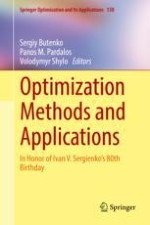Researchers and practitioners in computer science, optimization, operations research and mathematics will find this book useful as it illustrates optimization models and solution methods in discrete, non-differentiable, stochastic, and nonlinear optimization. Contributions from experts in optimization are showcased in this book showcase a broad range of applications and topics detailed in this volume, including pattern and image recognition, computer vision, robust network design, and process control in nonlinear distributed systems.
This book is dedicated to the 80th birthday of Ivan V. Sergienko, who is a member of the National Academy of Sciences (NAS) of Ukraine and the director of the V.M. Glushkov Institute of Cybernetics. His work has had a significant impact on several theoretical and applied aspects of discrete optimization, computational mathematics, systems analysis and mathematical modeling.
